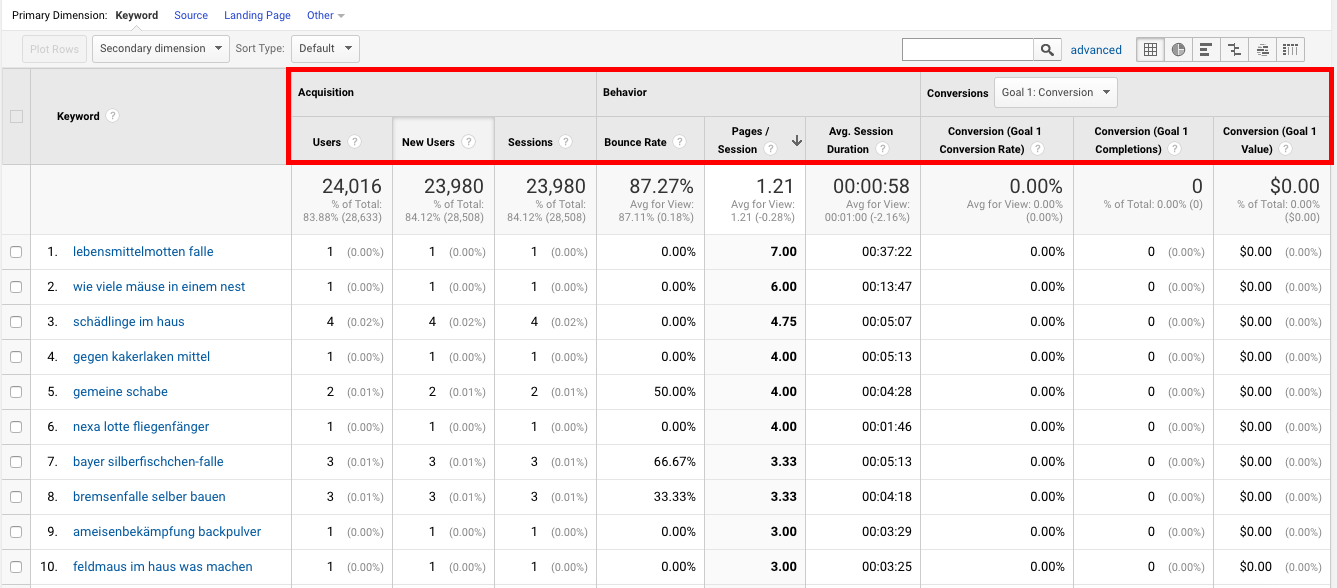Crucial Understanding: 'Secondary Dimensions' in Google Analytics Explained
Crucial Understanding: 'Secondary Dimensions' in Google Analytics Explained
Blog Article
Deciphering the Importance of Secondary Measurement in Google Analytics: All Regarding Its Relevance and Influence
In the realm of electronic analytics, the use of additional dimensions within Google Analytics serves as a crucial device for discerning much deeper layers of information understandings. The value of additional measurements lies in their ability to supply a nuanced view of user behavior and interaction with a website or platform.
Recognizing Additional Dimensions in Google Analytics
The understanding of secondary dimensions in Google Analytics is important for obtaining deeper insights right into customer habits and site performance. While main measurements offer basic data factors such as website traffic sources and web page views, second dimensions permit for an extra nuanced analysis by giving additional context to these primary metrics. By incorporating second dimensions, individuals can sector and filter their information to reveal patterns and patterns that might not be promptly obvious.

Unveiling the Perks of Secondary Dimensions
Building upon the foundational understanding of second measurements in Google Analytics, checking out the benefits they provide reveals indispensable insights for boosting data analysis and decision-making. By integrating additional dimensions, individuals can delve deeper right into their data, gaining an extra detailed sight of individual habits, material performance, and various other key metrics. Among the primary benefits is the capacity to section data, permitting a much more granular analysis of various dimensions such as traffic resources, tools, demographics, and a lot more. When looking at data in accumulation., this segmentation makes it possible for customers to determine patterns, fads, and connections that might not be noticeable (what is a “secondary dimension” in google analytics?).
Furthermore, secondary dimensions give context to primary information, providing extra layers of info that can aid in comprehending customer communications and preferences. This boosted understanding can guide strategic decision-making, causing even more targeted advertising and marketing campaigns, web site optimizations, and general better performance. In significance, second dimensions serve as an effective tool for opening much deeper understandings and maximizing the utility of Google Analytics for businesses and site owners.
Leveraging Secondary Dimensions for Boosted Insights
By harnessing the power of additional dimensions in Google Analytics, services can uncover much deeper insights that drive informed decision-making and calculated optimization initiatives. Leveraging additional measurements enables companies to dive beyond surface-level data and get a much more thorough understanding of individual habits, target market demographics, web traffic sources, and internet site efficiency. For instance, by incorporating key dimensions like web traffic sources with additional measurements such as geographic area or tool category, organizations can identify which regions or gadgets are driving one of the most beneficial traffic to their internet site.
Additionally, second dimensions allow organizations to section and analyze information extra effectively, aiding them recognize trends, patterns, and possibilities that might have or else gone unnoticed. By utilizing second measurements, organizations can customize their advertising and marketing methods, material, and individual experience to much better meet the demands and choices of their target audience. In significance, leveraging second measurements in Google Analytics empowers businesses to make data-driven choices that cause boosted efficiency, enhanced ROI, and lasting growth.

Effect of Second Measurements on Data Analysis
Enhancing data evaluation through the utilization of secondary measurements in Google Analytics provides businesses with a deeper understanding of their on-line efficiency metrics. By incorporating secondary measurements, such as time of day, geographic area, or device group, services can uncover useful understandings that may have been overlooked with main measurements alone. This boosted degree of granularity allows for even more specific division of information, enabling businesses to determine patterns, patterns, and connections that can drive calculated decision-making.

Optimizing Prospective: Additional Dimensions Approaches
The tactical utilization of secondary measurements in Google Analytics expands past improving data evaluation; it involves crafting targeted techniques to unlock the complete potential of beneficial insights for service growth. By utilizing secondary dimensions effectively, businesses can delve much deeper right into their website web traffic, individual actions, and advertising and marketing projects to draw out actionable understandings. One essential technique is to combine second dimensions with main measurements to gain a comprehensive sight of user interactions. Pairing the primary measurement of 'source/medium' with additional dimensions like 'landing why not check here page' or 'device classification' can disclose which networks are driving website traffic to certain pages or exactly how customer behavior differs throughout gadgets.
Additionally, making use of second dimensions to sector information based on user demographics, habits, discover here or technology can help businesses tailor their advertising efforts to details target market segments. This targeted technique can lead to improved conversion rates, enhanced user experiences, and ultimately, increased ROI. By optimizing the capacity of secondary measurements in Google Analytics, companies can make informed decisions, optimize their online presence, and drive sustainable growth.
Final Thought
In conclusion, secondary dimensions in Google Analytics play a vital role in providing much deeper insights and improving data analysis. Including second dimensions into information analysis methods can lead to even more enlightened decision-making and boosted total performance.
While main measurements provide basic data points such as web traffic sources and page views, second measurements allow for an extra nuanced evaluation by providing extra context to these primary metrics. By integrating primary dimensions like website traffic resources with secondary dimensions such as geographic area or gadget classification, companies can identify which gadgets or areas are driving the most beneficial web traffic to their internet site.
By incorporating second dimensions, such as time of day, geographic location, or device category, organizations can reveal useful insights that might have been ignored with key measurements alone. One essential strategy is to combine secondary measurements with key dimensions to gain a detailed view of user interactions. Combining the main dimension of 'source/medium' with secondary measurements like 'landing web page' his explanation or 'device category' can expose which networks are driving web traffic to details pages or how user habits varies across tools.
Report this page